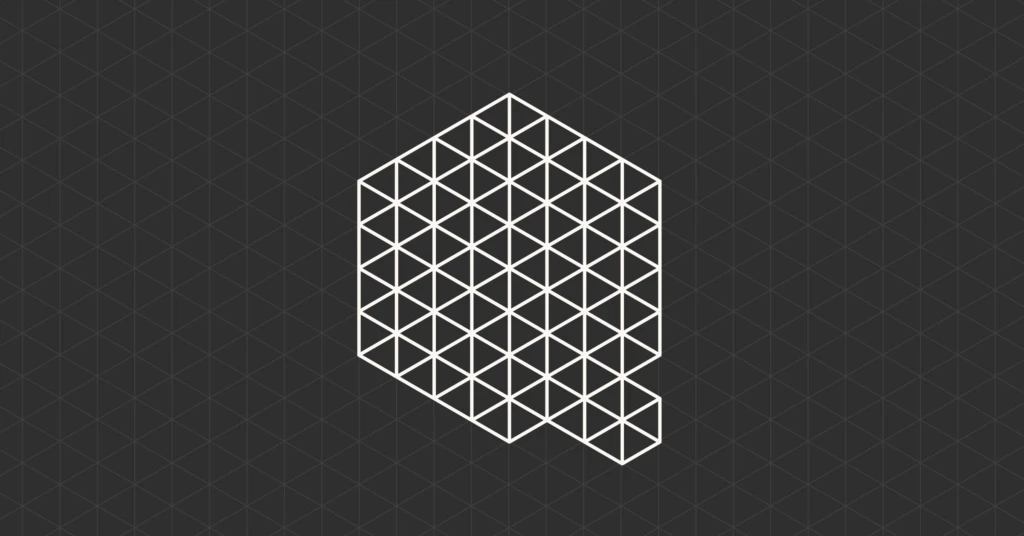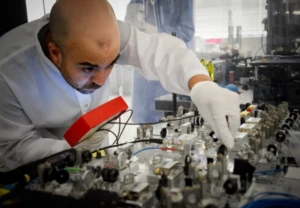
Building a bridge to the future of supercomputing with quantum acceleration
Using supercomputing and new tools for understanding quantum algorithms in advance of scaled hardware gives us a view of what may be possible in a future with scaled quantum computing. Microsoft’s new Quantum Intermediate Representation (QIR), designed to bridge different languages and different target quantum computation platforms, is bringing us closer to that goal. Several Department of Energy (DOE) national laboratories are using this Microsoft technology in their research at the new National Quantum Initiative (NQI) quantum research centers.
As quantum computing capabilities mature, we expect most large-scale quantum applications will take full advantage of both classical and quantum computing resources working together. QIR provides a vital bridge between these two worlds by providing full capabilities for describing rich classical computation fully integrated with quantum computation.
QIR is central to a new collaboration between Microsoft and DOE’s Pacific Northwest National Laboratory (PNNL) born out of NQI’s Quantum Science Center (QSC) led by DOE’s Oak Ridge National Laboratory (ORNL). The goal of the PNNL project is to measure the impact of noisy qubits on the accuracy of quantum algorithms, specifically the Variational Quantum Eigensolver (VQE). In order to run it in simulation on the supercomputer, they needed a language to write the algorithm, and another representation to map it to run on the supercomputer. PNNL used Microsoft’s Q# language to write the VQE algorithm and then QIR provides the bridge, allowing easy translation and mapping to the supercomputer for the simulation.
The PNNL team is showcasing the simulation running on ORNL’s Summit supercomputer at this week’s virtual International Conference for High Performance Computing, Networking, Storage, and Analysis (SC20). You can view their presentation here: Running Quantum Programs at Scale through an Open-Source, Extensible Framework.
Q# and QIR are also helping to advance research at ORNL, which is accelerating progress by enabling the use of the Q# language for all QSC members, including four national labs, three industry partners, and nine universities. ORNL is integrating Q# and QIR into its existing quantum computing framework, so ORNL researchers can run Q# code on a wide variety of targets including both supercomputer-based simulators and actual hardware devices. Supporting Q# is important to ORNL’s efforts to encourage experimentation with quantum programming in high-level languages.
The ORNL team is using QIR to develop quantum optimizations that work for multiple quantum programming languages. Having a shared intermediate representation allows the team to write optimizations and transformations that are independent of the original programming language. ORNL chose to use QIR because, being based on the popular LLVM suite, it integrates seamlessly with ORNL’s existing platform and provides a common platform that can support all of the different quantum and hybrid quantum/classical programming paradigms.
Since QIR is based on the open source LLVM intermediate language, it will enable the development of a broad ecosystem of software tools around the Q# language. The community can use QIR to experiment and develop optimizations and code transformations that will be crucial for unlocking quantum computing.
Microsoft technology is playing a crucial role in DOE’s NQI initiative connecting experts in industry, national labs, and academia to accelerate our nation’s progress towards a future with scaled quantum computing.
Learn more about the latest developments in quantum computing from Microsoft and our QSC national lab partner PNNL in these virtual SC20 conference sessions.
Visualizing High-Level Quantum Programs (November 11 at 12pm EST)
Complex quantum programs will require programming frameworks with many of the same features as classical software development, including tools to visualize the behavior of programs and diagnose issues. The Microsoft Quantum team presents new visualization tools being added to the Microsoft Quantum Development Kit (QDK) for visualizing the execution flow of a quantum program at each step during its execution. These tools are valuable for experienced developers and researchers as well as students and newcomers to the field who want to explore and understand quantum algorithms interactively.
Exotic Computation and System Technology: 2006, 2020 and 2035 (November 17 at 11:45am EST)
Dr. Krysta Svore, Microsoft’s General Manager of Quantum Systems and Software, is on this year’s exotic system panel. The SC20 panel will discuss predictions from past year sessions, what actually happened, and predict what will be available for computing systems in 2025, 2030 and 2035.
Density Matrix Quantum Circuit Simulation via the BSP Machine on Modern GPU Clusters (November 17 at 10am EST)
As quantum computers evolve, simulations of quantum programs on classical computers will be essential in validating quantum algorithms, understanding the effect of system noise and designing applications for future quantum computers. In this paper, PNNL researchers first propose a new multi-GPU programming methodology which constructs a virtual BSP machine on top of modern multi-GPU platforms, and apply this methodology to build a multi-GPU density matrix quantum simulator. Their simulator is more than 10x faster than a corresponding state-vector quantum simulator on various platforms.



